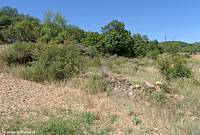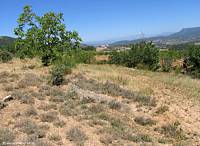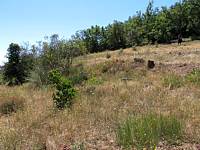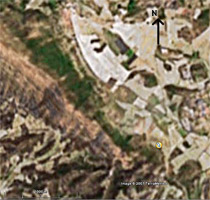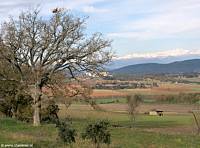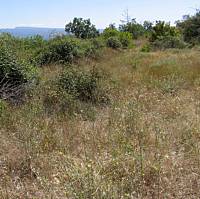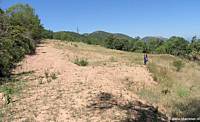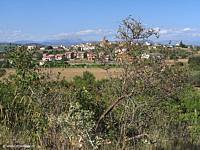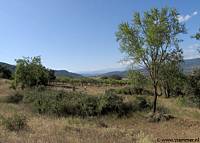|
|
Nature
Switched On
|
|
|
introduction |
This is what we first saw
when we approached our future terrain at 11 o'clock on a hot
summerday morning.
|
First impression coming from the south. |
|
Looking to the north with the
Pyrenees in the background.
Thymus vulgaris
and a walnut tree in
the foreground |
The trees and the forest
at the back were remarkably green. On the terrain were at least 15
almond trees and a quick
look
at the other tree an
|
Looking at the line of the forest towards the south. |
|
Quercus ilex,
Q. faginea,
Q. coccifera,
Juniperus communis,
J. oxycedrus,
Celtis australis,
Juglans regia,
Crateagus monogyna,
Cornus sanguinea, Sorbus species, Rubus species,
Lonicera species and others. These species indicated that the
|
||
|
|
Satellite image of the sierra | |
| An old Quercus faginea tree to the north of the terrain. At the top a vulture (Gyps fulvus) and in the distance Mount Perdido (3355m). Photograph taken on 23 Dec 2006 | ||
|
A striking presence was
Chondrilla juncea (Rush
Skeletonweed or Hogbite). Not exactly a beauty but vigourously
growing
|
|
|
|
Chondrilla juncea
together with
Scabiosa columbaria.
At the back, bushes of
Cornus sanguinea
and Rubus sp. 12:26 |
||
|
|
Unfortunately the place was not completely
inmaculate. The previous owner had prepared and levelled part of the
terrain to build some horse stables. This part was almost devoid of
vegetation but it will nevertheless
be
interesting to see how it will develop. Perhaps I will have to help
this development a little by mulching the soil with straw or hay. In
ecology this se
|
|
| The south part of the terrain where some stables were projected. Notice the nice group of Centaurea scabiosa to the right which seem eager to populate the area again. 12:21 | ||
|
The terrain is at a distance of 500 m from a village
of 300 inhabitants, offering both advantages and disadvantages. Fact
is that it is quite dominantly visible from most points. Dominating
over the village is the image of the beautiful monolith Turbon with a height of 2417m.
|
||
| The
village to the south-east.At the background the Mount Turbon, at the foreground Lonicera etrusca and Eryngium campestre 17:55 |
17:12 The terrain (marked in red) seen from the village. The swimming pool only a 5 minute walk away.. |
|
|
Overview of the terrain,looking south.... |
Our first visit was supposed to be orientative and prospecting but we were immediately enchanted by the place and decided to buy it. The next day I had to travel to my home country (Holland) and our next visit would be in September.
|
|
|
|
....and here looking in the opposite direction to the north with the Pyrenees at the
horizon, an almond orchard in the centre and a solitary almond tree
on the right. 18:14
|
|
|
introduction |
